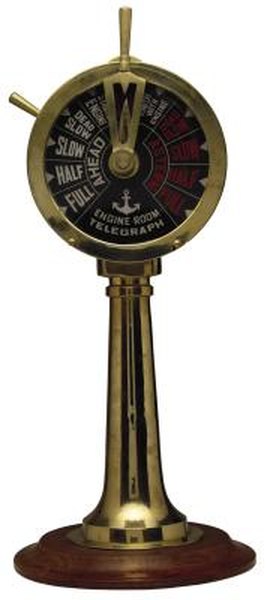
In an outboard motor, two things need watching: the temperature and the rpm. For an outboard motor, the temperature of concern is different from the that in the motor installed in your car. On an outboard, the temperature of the cylinder head needs to be monitored, not the temperature of the cooling water. Yamaha outboards are cooled by raw water, with a bypass valve that opens when the cylinder head reaches a preset temperature. There's an accommodation for an analog sensor -- a boss in the top of the No. 1 cylinder -- which permits the installation of a temperature gauge. For determining the engine speed, a component called a "tachometer" only needs two connected wires.
Items you will need
13 mm socket
Thread locker
Engine temperature gauge kit
Torque driver
Plastic wire ties
Drill
Hole saw
Duct tape
Screwdriver
Spade terminal
Wire crimper
Heat-shrink tube
Silver-bearing, rosin-core solder
Soldering iron
Heat gun
Temperature
Step 1
Locate the analog temperature sensor bore on the top of the No. 1 cylinder, adjacent to the spark plug and directly across from the digital engine temperature sensor. Remove the plug from the bore, using a 13 mm socket.
Step 2
Spread a bit of thread locker on the threads of the analog temperature sensor. Thread the analog temperature sensor from the engine temperature gauge kit into the open bore, and tighten to 14 inch-pounds with a torque driver. Bundle the sender wire with the ignition cable, using plastic wire ties, as you bring the sender wire to the temperature gauge.
Step 3
Drill a hole in the dash large enough to accommodate the body of the temperature gauge, using a drill and hole saw. Pull the wire from the temperature sender up through the hole in the dash and tape it to the dash with duct tape.
Step 4
Locate the power bus where other instruments are connected. Loosen the screws on the bus, using a screwdriver, and push the spade terminal on the temperature gauge's power wire under the screws. Tighten the screws snugly. Connect the gauge's black wire to the boat's common ground.
Step 5
Pull the sender wire from the dash and remove the duct tape from it. Crimp a spade terminal onto the end of the wire, using a wire crimper. Loosen the screw on the "S" post on the back of the temperature gauge. Push the spade terminal under the post and tighten the screw securely.
Tachometer
Step 1
Drill a hole in the dash to accommodate the tachometer.
Step 2
Slide a heat-shrink tube over the tachometer's "send" wire; locate the "send" wire (the green wire from the ignition coil) under the remote control box, where the throttle is housed.
Step 3
Connect the tachometer's black wire to the boat's common ground. Solder, using silver-bearing rosin-core solder and a soldering iron, the tachometer's "sender" wire to the green wire extending from the throttle control box.
Step 4
Slide the heat shrink tube over the soldered connection. Apply heat from a heat gun until the shrink tube contracts around it.
Warnings
- This project involves working with heated objects and surfaces. Take appropriate precautions.
- Disconnect the negative cable of your battery before performing any maintenance work on your boat’s electrical system to prevent electrical shock. Remove the nut from the negative post with a 5/16-inch box-end wrench. Lift the cable from your battery, move it outside of the battery box and close the lid of the battery box. After the work is complete, reconnect the negative battery cable.
References
- "Yamaha/Mercury/Mariner Repair Manual 4-Stroke, 1995-2004"; Seloc Marine; 2007
Warnings
- This project involves working with heated objects and surfaces. Take appropriate precautions.
- Disconnect the negative cable of your battery before performing any maintenance work on your boat’s electrical system to prevent electrical shock. Remove the nut from the negative post with a 5/16-inch box-end wrench. Lift the cable from your battery, move it outside of the battery box and close the lid of the battery box. After the work is complete, reconnect the negative battery cable.
Writer Bio
Will Charpentier is a writer who specializes in boating and maritime subjects. A retired ship captain, Charpentier holds a doctorate in applied ocean science and engineering. He is also a certified marine technician and the author of a popular text on writing local history.



